- News
- Reviews
- Bikes
- Accessories
- Accessories - misc
- Computer mounts
- Bags
- Bar ends
- Bike bags & cases
- Bottle cages
- Bottles
- Cameras
- Car racks
- Child seats
- Computers
- Glasses
- GPS units
- Helmets
- Lights - front
- Lights - rear
- Lights - sets
- Locks
- Mirrors
- Mudguards
- Racks
- Pumps & CO2 inflators
- Puncture kits
- Reflectives
- Smart watches
- Stands and racks
- Trailers
- Clothing
- Components
- Bar tape & grips
- Bottom brackets
- Brake & gear cables
- Brake & STI levers
- Brake pads & spares
- Brakes
- Cassettes & freewheels
- Chains
- Chainsets & chainrings
- Derailleurs - front
- Derailleurs - rear
- Forks
- Gear levers & shifters
- Groupsets
- Handlebars & extensions
- Headsets
- Hubs
- Inner tubes
- Pedals
- Quick releases & skewers
- Saddles
- Seatposts
- Stems
- Wheels
- Tyres
- Health, fitness and nutrition
- Tools and workshop
- Miscellaneous
- Buyers Guides
- Features
- Forum
- Recommends
- Podcast
£800.00
VERDICT:
A well-specced, good value and versatile bike for mixed terrain riding, with a few obvious trade-offs at this price point
Weight:
11,380g
Contact:
At road.cc every product is thoroughly tested for as long as it takes to get a proper insight into how well it works. Our reviewers are experienced cyclists that we trust to be objective. While we strive to ensure that opinions expressed are backed up by facts, reviews are by their nature an informed opinion, not a definitive verdict. We don't intentionally try to break anything (except locks) but we do try to look for weak points in any design. The overall score is not just an average of the other scores: it reflects both a product's function and value – with value determined by how a product compares with items of similar spec, quality, and price.
What the road.cc scores meanGood scores are more common than bad, because fortunately good products are more common than bad.
- Exceptional
- Excellent
- Very Good
- Good
- Quite good
- Average
- Not so good
- Poor
- Bad
- Appalling
The Raleigh Mustang Sport is a decent all-rounder that will do nicely for the commute and can also take on off-road forays if you're looking to get into gravel/adventure riding. It's not too heavy, looks cool, and while some of the cheaper components might be underwhelming, with its relaxed geometry it's a fairly comfortable and capable bike for the money.
- Pros: Comfortable geometry, tubeless-ready wheels, affordable
- Cons: Cheap components, more mellow ride than previous iteration, price has jumped up from last year
While many an old flat-bar Raleigh Mustang from decades gone by sits gathering dust in sheds all over the land as I type this, the most recent iterations have seen the classic 80s beater reinvented as an 'adventure' bike, a sort of hybrid with drop bars if you will. Last year's Mustang Elite was well received by Dave Arthur, so I was keen to see if the latest version in its entry-level spec would give me the 'do everything' ride it promised.
> Find your nearest dealer here
It's seen a couple of changes from last year's model, with the main aesthetic differences being a flattened top tube as opposed to curved, and dropped seatstays. The previous iteration looked a bit racy, but the dropped stays should in theory give it that bit of extra shock absorption at the rear, and the thicker, flatter top tube just gives an overall impression of a comfortable, leisurely ride.
The geometry reflects this, with a 71-degree head angle (on the medium size bike) to give a slacker front end than a road bike, a 75mm bottom bracket drop and 73-degree seat angle. The effective top tube on my medium test bike is 56cm, a little longer than many bikes described as a medium, but the stem is on the shorter side at 90mm to balance things out and keep the reach to the handlebar down.
On test is the entry-level Sport model, and while the Comp (£1,100) and Elite (£1,500) versions of the Mustang spec SRAM 1x systems, the Sport is equipped with FSA's Tempo 46/30 'sub-compact' double chainset. Paired with an 11-32 cassette and Shimano Claris 8-speed shifters, this gives you plenty of low gears to tackle climbs.
You might fear that the extra weight of a gravel-themed bike might cancel out the easier gearing but there's nothing really to fear here, as we weighed the Sport at 11.38kg (Raleigh puts the approximate weight at 11.5kg on its website). The frame is made with double-butted 6061 aluminium, paired with a full-carbon fork.
Aesthetically, the area where the head tube, top tube and down tube meet looks untidily welded, as do the joins around the bottom bracket area. I like the artwork on the fork, seatstays and chainstays, and the glossy silver paintwork is otherwise okay to look at, but the finish around the joins could be tidier and smoother. The frame has two sets of bottle bosses and mudguard mounts front and rear, and cables are internally routed.
The ride
I did the full works of commuting, towpath and off-road forays, plus even a group ride or two to see if the Mustang could stick with some roadies during my test period (it just about did, FYI). For the commute – 18 miles each way and a mix of tarmac and muddy cyclepath – things were pretty much as I expected: a couple of minutes slower than my winter road bike, but in return it tackled the rough sections more smoothly thanks to the 36mm tyres, and the mellow geometry left me feeling comfortable.
If you want to ramp things up, the Mustang does show a few weaknesses. The wheels, courtesy of OEM brand XLC, have quick releases, which doesn't quite give you the same stiffness as thru-axles, and also means disc brake rub is more likely if they're not lined up precisely. The disc brakes themselves, mechanical Promax DSK330s with 160mm rotors, are pretty good, though. They provide plenty of stopping power and are easy to tweak via the barrel adjusters. I also felt a bit of flexibility through the bottom bracket area when I really hammered the bike on tough climbs – the cheap cartridge system bottom bracket isn't especially robust.
That said, at steady speeds the Mustang is just a nice easy ride. One big plus is that the wheelset is tubeless-ready, so if you're planning on taking the bike off-road more than on it, and want more peace of mind with regards to puncture protection, you do have the option to run tubeless. The tyres it comes with aren't tubeless-ready though, so you'll have to buy additional ones.
The bike generally handles pretty well, offering responsive steering and the alloy handlebar felt nice and plush both on the drops and tops.
The saddle is Raleigh's own C1. It's not really a leisure saddle as such, but it's certainly not a road racing perch, with pretty deep padding that will feel comfortable for the majority of riders.
For me, the Clement X'Plor 36mm tyres are a real highlight (read Mike's glowing review of the tubeless ready versions here), and mean the Mustang is more than capable of off-roading while providing plenty of comfort on rough roads, towpaths and bridleways. They handle rough tarmac well, and the tread is on the shallow side so cornering isn't compromised on the road. They won't rival mountain bike or cyclo-cross tyres over very muddy terrain, but run with a bit less pressure than on tarmac, say 60psi, they will do just fine in the countryside. As I mentioned, these aren't the tubeless-ready versions, but for what I was mostly using the Mustang for, the puncture protection was more than adequate.
Uphill gearing
The gearing setup means you've got proper granny gears for climbing, which will come in handy if you plan on taking the bike on steep off-road trails. The trade-off compared to the 1x gearing on the Mustang Comp and Elite is, of course, front mech faff, and I do find that with these cheaper components quite a few regular adjustments are needed to keep the gears running smoothly – probably not what the average Raleigh Mustang customer would want to hear.
I wouldn't personally opt for 46/30t chainrings, simply because there's not enough at the top for me; I was riding in the smallest two or three sprockets for the majority of my rides. I'd prefer a 50/34, even on a gravel bike. I can, of course, appreciate some riders might want or need the lower gearing, and a sub-compact setup with 16 gears in total means you get lower jumps between gears than the 40t single ring paired with an 11-42 11-speed cassette on the £1,100 Mustang Elite. So for the target market, it's pretty appropriate.
Value
In terms of value, it looks like a pretty good package for the money, until you consider the Mustang Sport from last year was specced with Shimano's better 9-speed Sora groupset for the same price. The 2018 Sport is more relatable to the 2017 entry-level version from last year, which was £650, but you get the neater internal cable routing, a new frame shape and arguably better tyres.
Whether these credentials add up to a £150 price rise is up for debate, and looking around elsewhere you can get the same or similar adventure bikes for cheaper. The Vitus Substance comes in at £699.99 with Sora-level components, but it doesn't have a carbon fork.
> Buyer's Guide: 18 of the best 2018 gravel & adventure bikes
Probably the closest comparable bike would be the Norco Search, which again has an alloy fork rather than carbon and slightly less tyre clearance, taking up to a 35mm – but it's only £650.
Jumping up to the £1,000 mark, you could get a Giant Toughroad with much bigger tyre clearance, or a GT Grade Expert with 105 shifting – but for an all-round comfortable and easy ride at well under the grand mark, the Mustang's spec is very appropriate for the 'do everything' casual cyclist.
Conclusion
In summary, I think the Mustang Sport is an unpretentious adventure bike that will go a long way for the money. The flat top tube and general bulkier appearance of the frame compared with the 2017 version might not appeal to all, but this is a nod to Raleigh's target customer who want a relaxed ride, which the dropped seatstays and easy gearing will give you.
While it's not the speediest or most inspiring ride out there, the Mustang has a reasonable spec for the money, it's suitable for tarmac or brief forays off-road, and it would make a good commuter or introductory gravel bike. For simplicity the 1x Elite version may be more appealing for £300 extra, but if you have £1K to drop on a commuter that you can also take into the woods and want plenty of change for accessories and clothing, the Mustang Sport isn't a bad place to start.
Verdict
A well-specced, good value and versatile bike for mixed terrain riding, with a few obvious trade-offs at this price point
road.cc test report
Make and model: Raleigh Mustang Sport
Size tested: 56/M
About the bike
State the frame and fork material and method of construction. List the components used to build up the bike.
From Raleigh:
Material AL6061
Frame Type Crossbar
Wheel Size 700c
Frame AL6061 double butted alloy, tapered headtube, Gravel geometry
Approximate Weight 11.5kg
Headset FSA orbit C40 integrated headset
Shift Levers Shimano Claris 2000
Rear Derailleur Shimano Claris
Brakes PROMAX - DSK330
Cassette Sunrace 11-32 8 speed
Chain KMC X7
Pedals Road Cage
Tyres Clement X'Plor MSO 700c x 36mm
Stem XLC ahead 90mm
Handlebars XLC Mustang Alloy
Saddle Raleigh C1
Seatpost XLC alloy microadjust 27.2
Seat Clamp XLC 31.8 allen bolt
Fork Gravel specific carbon fork with tapered alloy steerer
Crankset FSA TEMPO 46/30t
Bottom Bracket Cartridge System 110 mm
Inner Tubes 700x 36c presta valve
Front Wheel 700c XLC- A250 tubeless compatible on 6 bolt qr hub
Rear Wheel 700c XLC- A250 tubeless compatible on 6 bolt qr hub
Tape XLC sticky gel tape
Tell us what the bike is for
Raleigh says, "The Mustang is the perfect companion for the cyclist who enjoys a bit of everything.
"The Mustang is designed for the real world of getting to work or grabbing some fun at the weekend. A hybrid bike built for speed and agility, the Mustang Sport finds the balance between a road and off road bike allowing you to ride on a wide range of terrains.
"The all new Mustang Sport features a super lightweight Double butted Aluminium frame and tapered headtube with gravel frame geometry; designed to offer a more relaxed riding position than a traditional road bike without compromising too much on speed. The Gravel-specific carbon fork is lightweight and shock absorbent while the tapered alloy steerer affords precise handling and great tyre clearance.
"Tubeless compatible rims make it simple to upgrade to tubeless tyres if you want to be sure that a puncture won't hold you back on your adventures. Plus, the FSA adventure chainset offers gears low enough for climbing on trails and a high top gear for speed on the road, complimented by the Shimano's Claris groupset."
Frame and fork
Overall rating for frame and fork
7/10
Tell us about the build quality and finish of the frame and fork?
Double-butted 6061 alloy is robust and solid, and it's also light for the money. A carbon fork at this price point is good value.
Aesthetically, the area where the head tube, top tube and down tube meet looks untidily stuck together. I like the artwork on the fork, seatstays and chainstays, and the glossy silver paintwork is otherwise okay to look at apart from the joins.
Tell us about the materials used in the frame and fork?
6061 double-butted aluminium frame, gravel-specific carbon fork.
Tell us about the geometry of the frame and fork?
71 degree head angle
74.5 degree effective seat angle (half a degree slacker as sizes progress)
53mm seat tube
56mm top tube
15.5mm head tube
44cm chainstay
How was the bike in terms of height and reach? How did it compare to other bikes of the same stated size?
The 56cm top tube is on the longer side for a medium, balanced out by a shorter 90mm stem.
Riding the bike
Was the bike comfortable to ride? Tell us how you felt about the ride quality.
It has relaxed frame angles and quite an upright geometry; it isn't hugely exciting to ride, but it is comfortable.
Did the bike feel stiff in the right places? Did any part of the bike feel too stiff or too flexible?
Bottom bracket area feels a bit flexy when you're riding out of the saddle on hills, but elsewhere it's stiff enough.
How did the bike transfer power? Did it feel efficient?
Not massively, it felt a bit laborious at times.
Was there any toe-clip overlap with the front wheel? If so
No.
How would you describe the steering? Was it lively Not particularly. It felt more stable than agile.
Tell us some more about the handling. How did the bike feel overall? Did it do particular things well or badly?
It felt a bit cumbersome through corners, but otherwise it feels fairly easy to handle. The shorter wheelbase should have improved the handling over the 2017 Mustang.
Which components had the most effect (good or bad) on the bike's comfort? would you recommend any changes?
I like the tyres, and it gives a good all-round comfortable ride.
Which components had the most effect (good or bad) on the bike's stiffness? would you recommend any changes?
The carbon fork adds plenty of stiffness.
Which components had the most effect (good or bad) on the bike's efficiency? would you recommend any changes?
I found that the gears could skip without regular adjustment and maintenance.
Rate the bike for efficiency of power transfer:
6/10
Rate the bike for acceleration:
5/10
Feels pretty slow from the off, but holds speed well when it gets going.
Rate the bike for sprinting:
5/10
Rate the bike for high speed stability:
8/10
Rate the bike for cruising speed stability:
7/10
Rate the bike for low speed stability:
8/10
Rate the bike for flat cornering:
6/10
Rate the bike for cornering on descents:
7/10
Rate the bike for climbing:
6/10
Surprisingly decent for a gravel bike, and plenty of low gears to get you up steep climbs.
The drivetrain
Rate the drivetrain for performance:
5/10
Gears need fine-tuning quite often.
Rate the drivetrain for durability:
6/10
Rate the drivetrain for weight:
7/10
Rate the drivetrain for value:
8/10
Tell us some more about the drivetrain. Anything you particularly did or didn't like? Any components which didn't work well together?
The front derailleur needed quite a lot of adjustment. I wouldn't opt for 46/30t chainrings because I found the gearing a bit low, but other riders might appreciate it.
Wheels and tyres
Rate the wheels for performance:
7/10
Rate the wheels for durability:
8/10
Rate the wheels for weight:
7/10
Rate the wheels for comfort:
7/10
The 36mm gravel tyres from Clement feel plush and stable on or off road.
Rate the wheels for value:
8/10
Rate the tyres for performance:
7/10
Rate the tyres for durability:
8/10
Rate the tyres for weight:
8/10
Rate the tyres for comfort:
8/10
Rate the tyres for value:
8/10
Tell us some more about the tyres. Did they work well in the conditions you encountered? Would you change the tyres? If so
The Clement X'Plor tyres are fine for road and towpaths, and just about cut it through the mud.
Controls
Rate the controls for performance:
7/10
Rate the controls for durability:
7/10
Rate the controls for weight:
7/10
Rate the controls for comfort:
7/10
Rate the controls for value:
8/10
Your summary
Did you enjoy riding the bike? Most of the time.
Would you consider buying the bike? No
Would you recommend the bike to a friend? If they wanted an all-rounder and had a limited budget then yes.
Rate the bike overall for performance:
7/10
Rate the bike overall for value:
6/10
Use this box to explain your overall score
I think the Mustang is a decent bike for the money: it rides well, it's versatile and would make a fine entry-level gravel bike or commuter. You can get better spec components at this price point, and it's also jumped in price from last year, but I still think it warrants a 7 overall. There are some component trade-offs, and faster riders will find the gearing too low, but commuters who like to ride off-road occasionally will appreciate the relaxed geometry and comfortable ride – and it feels lighter and nippier than I first anticipated.
About the tester
Age: 27
I usually ride: Road bike (currently Specialized Tarmac) My best bike is: Ridley Chronus TT bike
I've been riding for: Under 5 years I ride: Every day I would class myself as: Experienced
I regularly do the following types of riding: road racing, time trialling, commuting, club rides, sportives, general fitness riding, triathlon races
Arriving at road.cc in 2017 via 220 Triathlon Magazine, Jack dipped his toe in most jobs on the site and over at eBikeTips before being named the new editor of road.cc in 2020, much to his surprise. His cycling life began during his students days, when he cobbled together a few hundred quid off the back of a hard winter selling hats (long story) and bought his first road bike - a Trek 1.1 that was quickly relegated to winter steed, before it was sadly pinched a few years later. Creatively replacing it with a Trek 1.2, Jack mostly rides this bike around local cycle paths nowadays, but when he wants to get the racer out and be competitive his preferred events are time trials, sportives, triathlons and pogo sticking - the latter being another long story.
Latest Comments
- SamSeed 2 hours 40 min ago
My 6KU, replaced everything but the front chainring over the past 5 years.
- froze 4 hours 37 min ago
This was a very good listing of bikes for under 1,000....
- Hirsute 7 hours 58 min ago
Radar tells me their closing speed, if they are slowing and how far away. Then I decide to say a prayer. The change of light pattern is incidental.
- lonpfrb 8 hours 18 min ago
Quite so, which is why our village 20mph zone covers the whole residential extent. Of course, enforcement is another thing..
- lonpfrb 8 hours 44 min ago
No, that's very doubtful while proper testing would be fully destructive.
- don simon fbpe 9 hours 59 min ago
What's wrong with dropping down on to the Millenium Bridge, or the swing bridge, then the brief, but satisfying climb back up the hill? #training....
- chrisonabike 10 hours 40 min ago
The relatives might of course disagree, but in general I'd countenance a relatively light sentence* if only we could fix it so that those who...
- ktache 11 hours 19 min ago
Id forgotten that I got a second hand set of project two's for my getting to work bike over twenty years back.
- Veganpotter 12 hours 16 min ago
My bet is that all these tires popping off are from people with bad pressure gauges or they're simply just putting too much air in on purpose. ...

































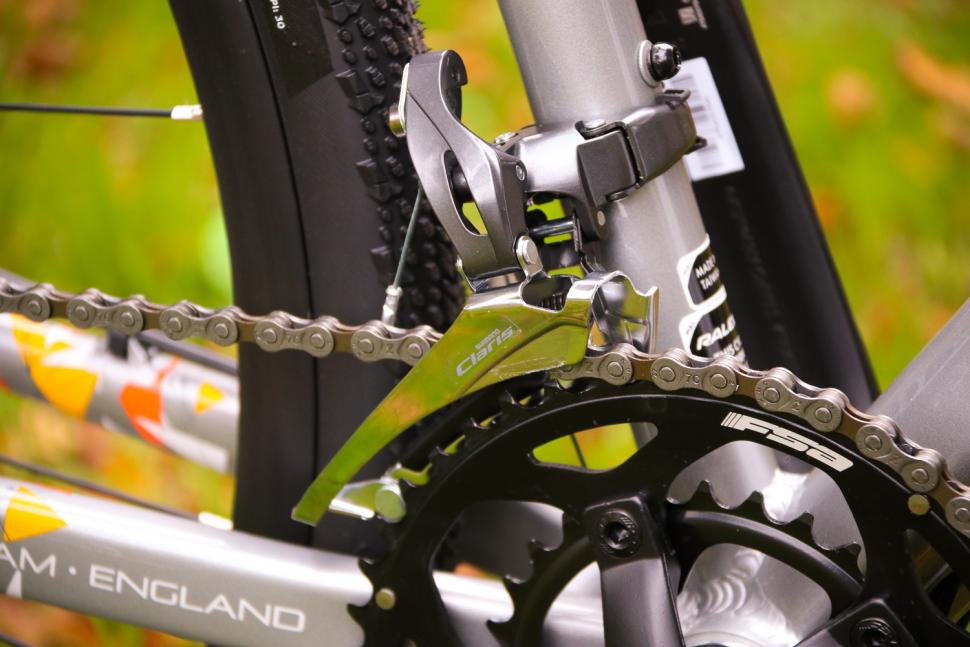

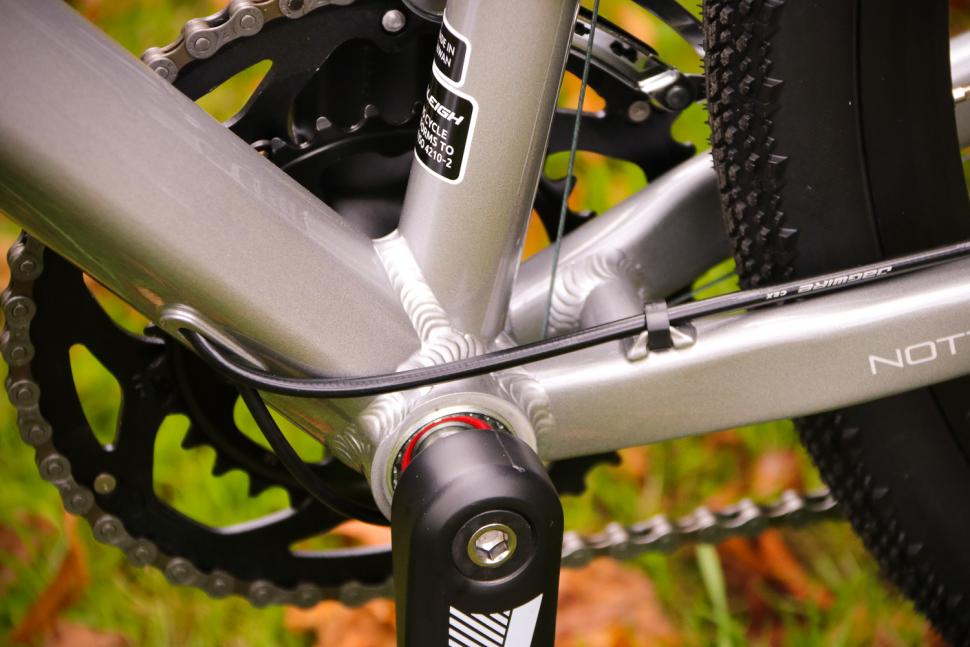
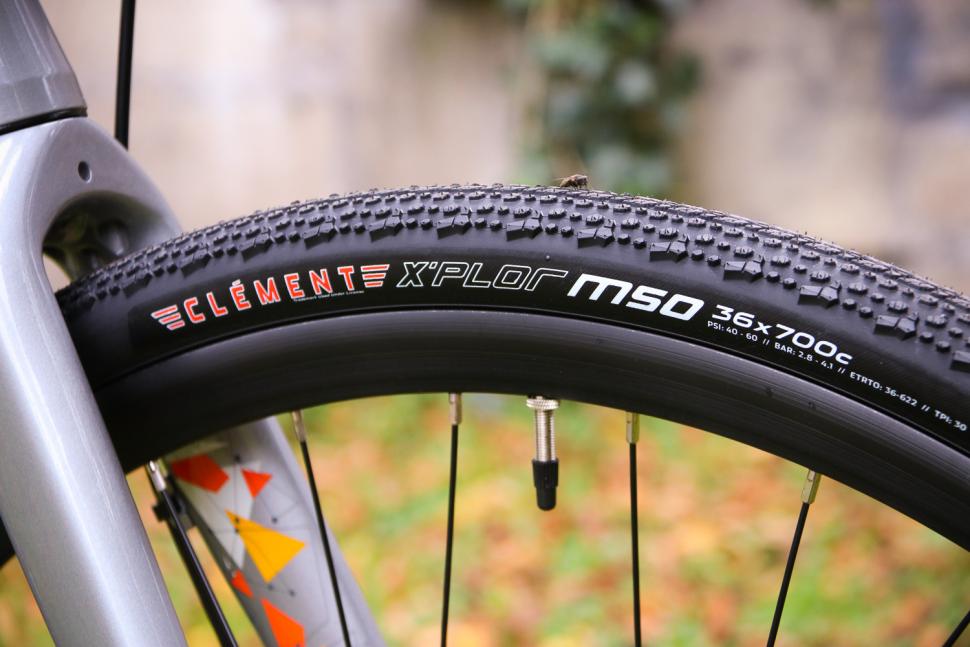

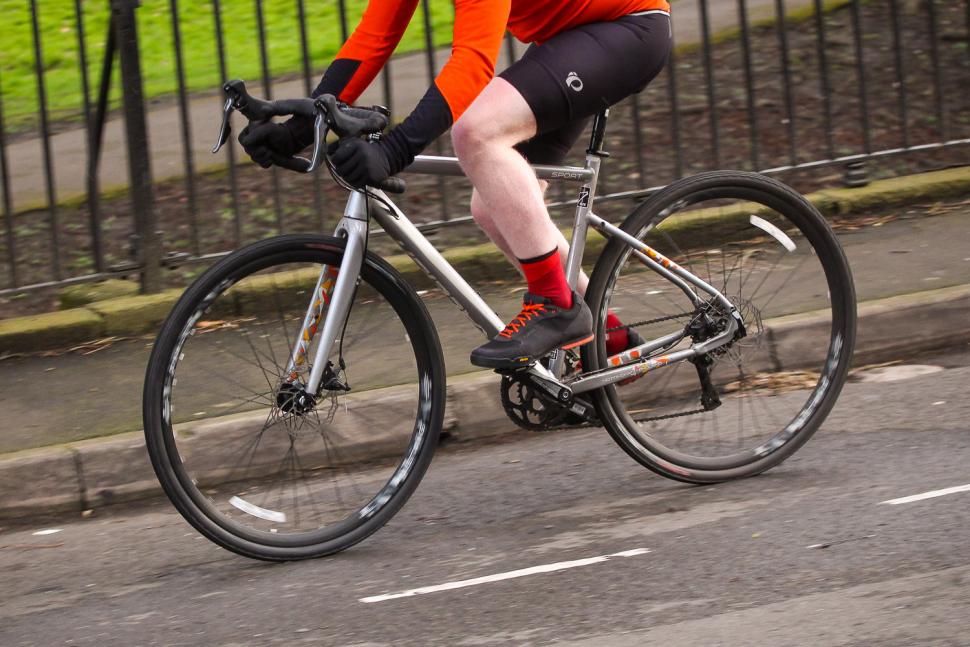

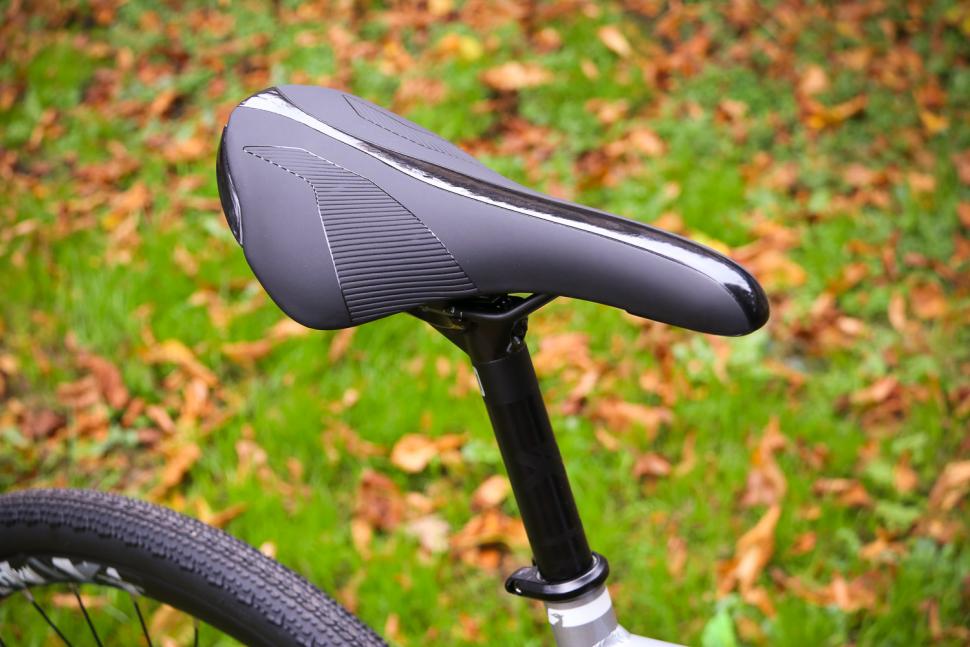

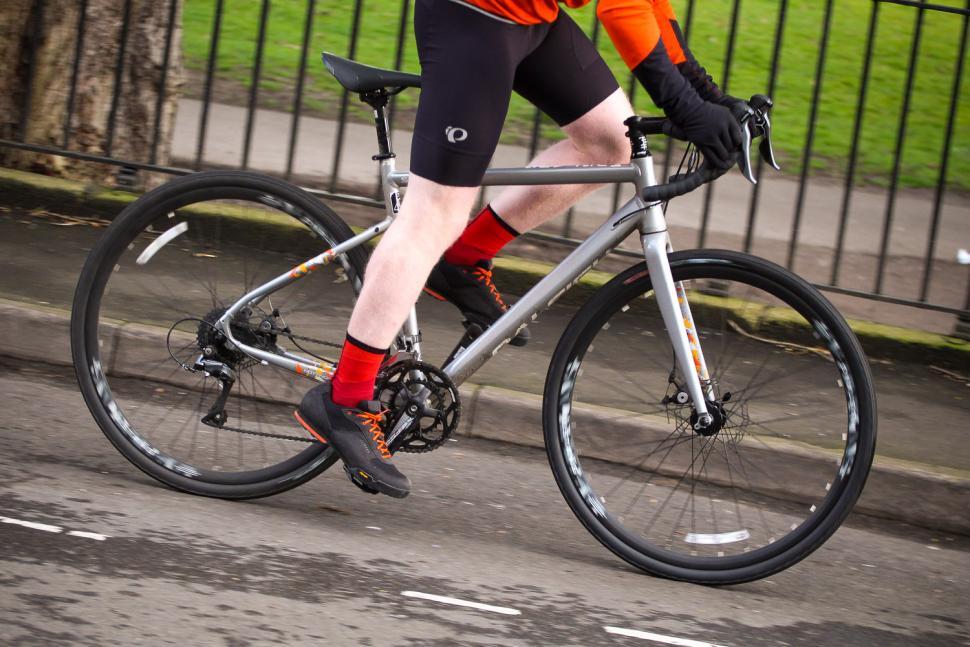
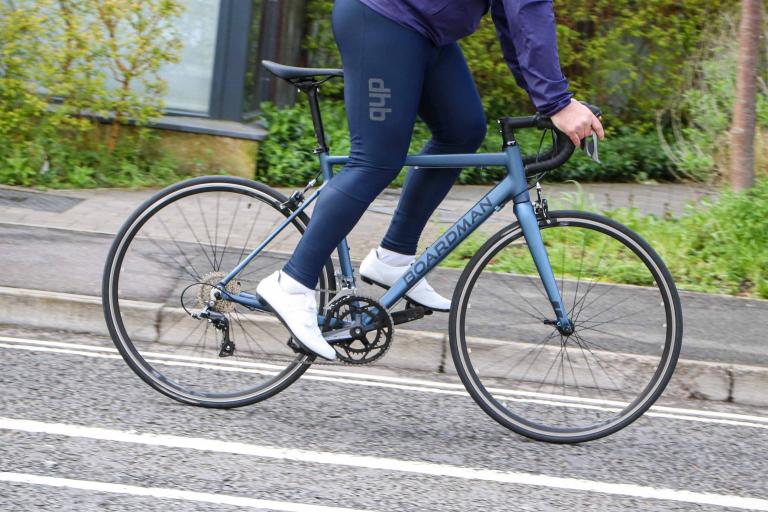
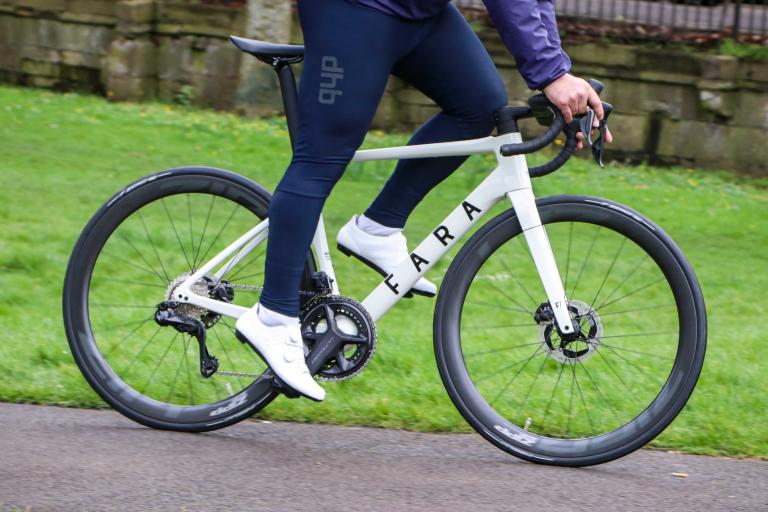
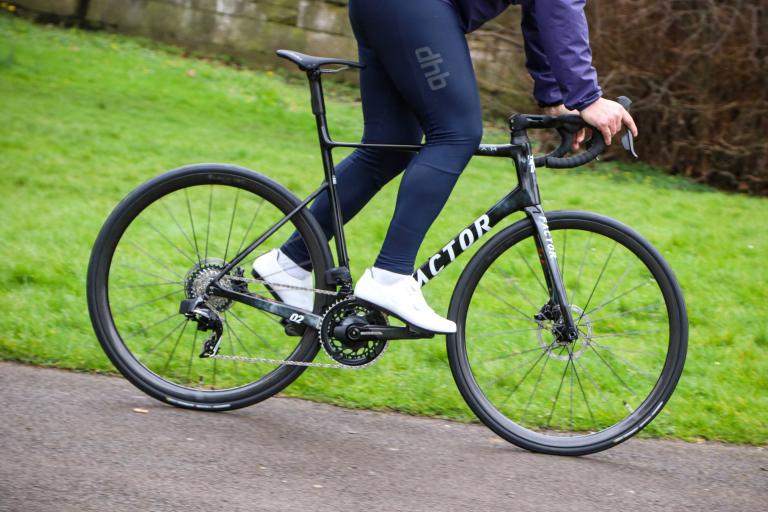
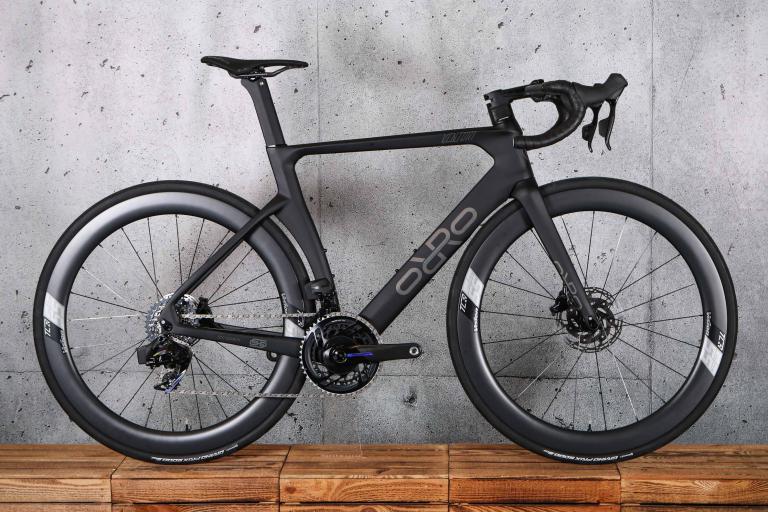
Add new comment
3 comments
"Not too heavy"?! Of course it's too heavy! Is it made from lead pipes or something? My 300 quid MOUNTAIN BIKE weighs about the same, with huge tyres and a steel fork.
Must have had weight added to it to meet some archaic UCI rule, I assume. Shame, cos it looked like a possible winter commuter steed.
I can't see the bike as the brightness of those legs is blinding.
Absolutely... Full finger winter gloves and bare knees, that's a one way ticket to the Otho' ward.